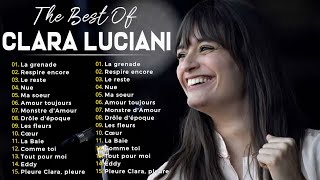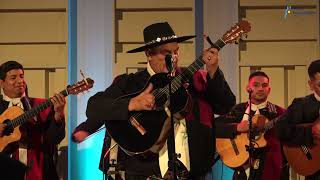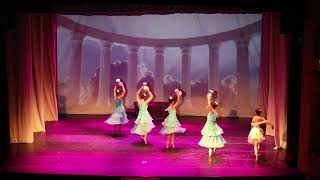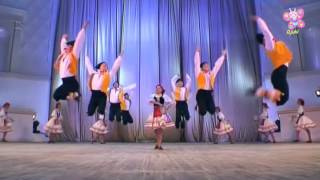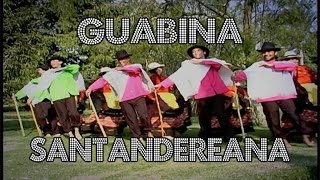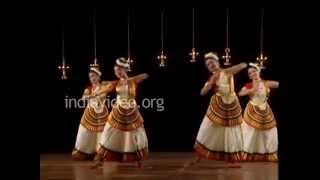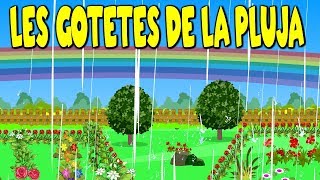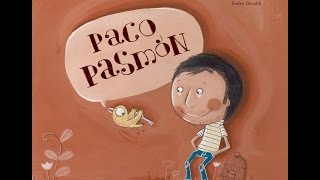
the genocidal terrorism that the State of Israel has
been exercising against the Palestinian People.
Recommended music videos for initiation to classical music
Johann Sebastian Bach (1685-1750) was a German violinist, organist, conductor and composer, born in Eisenach into the most prominent musical family in history. In 1703 he got his first job in Arndstat and in 1707 he moved to Mülhausen as an organist, where he married his cousin Maria Barbara with whom he had seven children. After the death of his wife in 1720, he remarried Maria Magdalena with whom he had another thirteen children. In 1723 he moved to Leipzig where he would reside until his death at the age of 65. Considered one of the three greatest geniuses in the history of music along with Mozart and Beethoven, his influence has been notable on Haydn , Mozart , Beethoven , Mendelssohn , Schumann , Chopin ... and many other renowned composers.
The Catalogue of Bach's Works, or Bach-Werke-Verzeichnis , better known by its acronym BWV , consists of a numbered index of all the composer's works, arranged thematically by type of work, genre, and whether vocal or instrumental. It is used by scholars and musicians worldwide. The catalogue was created in 1950 by the German musicologist Wolfgang Schmieder .
The Orchestral Suites, BWV 1066–1069 (called ouvertures by their composer), are four pieces by Johann Sebastian Bach , probably composed between 1725 and 1739 in Leipzig . The term ouverture refers to the opening movement in the style of the French overture, in which a majestic opening section in relatively slow duple time is followed by a rapid fugal section in triple time, then completed with a brief recapitulation of the introductory music. In a broader sense, the term was used in Baroque Germany to refer to a series of dance pieces in the French Baroque style preceded by an ouverture of this type.
Suite for Orchestra No. 3 in D major, BWV 1068. Its movements are: 1 Ouverture .- 2 Air .- 3 Gavotte I/II .- 4 Bourrée .- 5 Gigue ; of these, today we offer the second, Air (aria) , which is one of the most famous pieces of Baroque music; today the performance is conducted by Ton Koopman (1944), Dutch organist, harpsichordist and conductor, and currently one of the best specialists in Baroque music.
Wolfgang Amadeus Mozart (1756-1791) is considered one of the three giants of musical composition, along with Bach and Beethoven . A child prodigy born in Salzburg , he mastered the keyboard and violin at the age of six and began composing. His father, Leopold , exhibited him on exhausting tours of various European courts. A prolific composer (more than 600 works written from the age of five until his death), he cultivated all kinds of musical genres: piano works, chamber music, symphonies, concertante works, choral works, operas... each and every one of them, masterpieces of their genre. His operas The Magic Flute, Don Giovanni, Così fan Tutte, and The Marriage of Figaro are among the 10 most performed operas in the world. He died in Vienna at the age of 35.
The catalogue of Mozart's works or Köchel Catalogue ( Köchel Verzeichnis, in German) was created by Ludwig von Köchel in 1862 and lists the musical works composed by Wolfgang Amadeus Mozart . Each of Mozart 's works is designated by a number preceded by the abbreviation K. or KV ; this number designates the chronological order of its creation and which is actually valid for most of the works; however, in its first edition, works by other authors appear erroneously attributed to Mozart , and other authentic works that had not yet been discovered are omitted.
A sonata was originally a composition written to be played or "sounded" by one or more musical instruments, just as a cantata was written to be "sung" by one or more voices. From the Classical period (1750-1810) onwards, its definition was adjusted to a work generally structured in three movements (fast-slow-fast), and sometimes four, with or without a short introduction. It should not be confused with sonata form , which is a compositional model consisting of three uninterrupted sections: a) exposition, b) development, c) re-exposition. Sonata form is normally applied to the first movements of sonatas, quartets, symphonies and concertos .
Today, the Hungarian pianist Klára Würtz (1965) offers us the complete collection of Mozart sonatas.
Franz Schubert (1797-1828) was an Austrian composer who, at the age of 11, was admitted as a member of the choir of the Imperial Chapel in Vienna , where he was taught by Salieri . At that time, the only money-making activity was theater and opera, a genre in which he never managed to excel; so he focused on lieder (songs), among which his Ave Maria stands out. and the lieder ensemble La Bella Molinera . Despite dying at the age of 31, he left behind over 1,500 works, including numerous piano and chamber music pieces, eight symphonies, concertante works, incidental music, sacred music (including seven Masses, one Oratorio, and one Requiem), several singspiels (short operettas), some opera, and over 600 short vocal works, primarily the aforementioned lieder.
Rosamunde , from 1823, is a work by the composer Franz Schubert . It is the stage music for the play of the same name by the writer Helmina von Chézy , which only ran for two days. The public disappointment led to the cancellation of the remaining performances. Schubert 's score was missing, but was found in 1861. The libretto was never recovered, so the details of the plot are unknown.
Today we offer Suite No. 2 from his ballet performed by the Freixenet Symphony Orchestra conducted by Hungarian maestro András Schiff .
John Williams (1932) is an American composer, conductor, pianist and trombonist, considered one of the most prolific composers of soundtracks in the history of cinema; he has composed some of the most famous and recognizable of all time such as: Star Wars , Harry Potter , Jaws , Catch Me If You Can , ET , Superman , Indiana Jones , Jurassic Park , Schindler's List , Home Alone and others. He has also composed music for various Olympic Games , numerous television series , newsreels and several concert works . He has won the Oscar five times and has 52 nominations to his credit, making him the man with the second most nominations for the highest award in the seventh art after Walt Disney .
Schindler's List . The original soundtrack to Steven Spielberg 's 1993 film was composed and conducted by John Williams . Its main theme is one of the most recognized contemporary film scores and has been used by many top figure skaters in their programs.
Today we attend the version arranged for solo violin and brass band by Calvin Custer and performed by violinist Kyung Sun Lee accompanied by the New York Wind Orchestra conducted by Hana Kim .
Recommended classical music videos
Franz Joseph Haydn (1732-1809), an Austrian composer whose brother Michael Haydn was also a notable composer, was one of the main pillars on which Classicism was based (1750-1810). At the age of six he began his studies on harpsichord and violin. At the age of eight he was admitted as a chorister at St. Stephen's Cathedral in Vienna where he received singing, piano and violin lessons. After his voice changed, he had to survive by working multiple jobs while studying composition by analyzing the works of Carl Philipp Emanuel Bach . He laid the main foundations of sonata form and the formal structure of the string quartet and the symphony ; he maintained a close friendship with Mozart and was Beethoven 's teacher. He died at the age of 77 in Vienna .
The catalog of Haydn's works . Joseph Haydn's works are classified today according to the system devised by Anthony van Hoboken. Each work is identified by a Roman numeral corresponding to the category, which in most cases is identified with a genre. Some categories have subdivisions, indicated by a lowercase letter followed by an Arabic numeral corresponding to the order of the specific work within the category. These numerals are preceded by the word "Hoboken" (in memory of the catalog's author) and sometimes by "Hob" (its abbreviation).
Sturm und Drang (storm and assault) is a term that comes not from music but from literature; this term is understood as a reaction against the Baroque . In music, it criticizes polyphonic structure and mathematical speculation or symbolism, formulas that do not allow for adequate and simple expression, and the objective, rational, and comprehensible method. Emotional intensity, subjectivity in expression, and rebellion against social and artistic conventions are transferred to music. By creating heightened tension and incorporating passionate gravity, the aim is to achieve a new dramatic sense, alien to classicism.
Symphony No. 49 was written in 1768 by Joseph Haydn . Its nickname "The Passion" is thought to derive directly from the composition's archaic Sinfonia da Chiesa structure (slow, fast, slow, fast) , minor mode , and association with the composer's Sturm und Drang period. According to H. C. Robbins Landon, it is a "dark-hued, somber, even tragic" work. The symphony is structured in four movements: I (0:00) ADAGIO II (11:39) ALLEGRO DI MOLTO III (18:47) MENUET E TRIO IV (24:02) FINALE. PRESTO.
Today it is offered to us by the Orchestre Philharmonique de Radio France conducted by Canadian maestro Barbara Hannigan , who has directed the Berlin Philharmonic and other orchestras in Munich, Toronto, Cleveland, Gothenburg, Prague, etc. since 2011.
Étienne Ozi (1754–1813) was a French bassoonist and composer, known for his concertos, symphonies concertantes, and pedagogical pieces; his works influenced the development of the bassoon and remain a staple of the classical bassoon repertoire. Ozi 's Nouvelle Méthode de basson (1803) is considered one of the first comprehensive teaching materials for the bassoon, which at the time still had seven keys, compared to the much more complex modern instrument. Born in Nîmes , Ozi received his first musical experience in a military ensemble, but settled in Paris in 1777, where he studied with Georg Wenzel Ritter . His 1779 debut at the Concert Spirituel received effusive praise from the Parisian press. His 36 appearances over 12 years of performing there included 19 performances of his own works.
Today we offer his Concert Symphony for Bassoon and Oboe with Dmitry Bulgakov on oboe, Valery Popov on bassoon and Vyacheslav Valeev conducting the string orchestra; a concertante symphony structured in three movements: I (0.21") ALLEGRO .-. II (11.59") POLONAISE .-. III (15.28") RONDO – ALLEGRO NON TROPPO.
Clara Wieck (1819-1896), better known as Clara Schumann , was a German pianist, composer and piano teacher. As a pianist, she was a leading figure in the 19th century and a key figure in the dissemination of the works of her husband, Robert Schumann . She was born and raised in Leipzig into a musical family, where her mother was a famous singer and her father, a professional pianist and teacher of Clara , a child prodigy. She began to become known in Europe at the age of eleven; she married Robert Schumann and the couple had eight children. Together, they encouraged Johannes Brahms and maintained a close relationship with him. As a composer, she has left us a legacy of pieces for solo piano, a Piano Concerto , chamber music, orchestral works, 30 lieder and choral music.
Catalogue of the works of Clara Wieck . Her works are classified by their Opus number (from the Latin opus 'work'), a term used in music to catalogue the works of most composers. Since the 17th century , this form of cataloguing began to be used whenever a work was published, preceding the word Opus , or its abbreviation Op ., with the serial number of the work.
Piano Trio in G minor, Op. 17 , the work we offer today in a performance by Trio Noga , was the only trio Clara Wieck wrote and is considered by many critics to be her masterpiece. A year after completing it, her husband composed his first piano trio, Op. 63. Clara 's trio had a great influence on Robert 's trio , as they share many interesting similarities.
Isaac Albéniz (18601-1909 was a famous Catalan composer and pianist, disciple of Felipe Pedrell . Thanks to the help of Guillermo Morphy , Count of Morphy, composer and patron of the arts, he obtained a pension to train at the Brussels Conservatory in 1876, completing his studies in 1879. A virtuoso piano composer, he also composed music for other instruments; he dedicated more than a decade of his almost forty-nine years of life to writing themes for theater, such as his most successful operatic work Pepita Jiménez; he also dedicated himself to performing concerts or to the recording of his opera Merlín , which we offer today. He wrote more than two dozen songs, as well as several orchestral and chamber themes.
Merlin is the last of Isaac Albéniz 's operas. Written between 1897 and 1902, it is divided into three acts with a libretto written in English by Francis Money-Coutts . At the beginning of the 20th century , Albéniz became interested in composing musical theatre and settled in London , where he met Money-Coutts , heir to a banking fortune and amateur poet and playwright, who provided him with the necessary financial support. The action of this opera takes place in London , where the magician Merlin urges the English nobility and the Archbishop of Canterbury to elect a new King for England , after which it is agreed that the chosen one will be the one who manages to extract the sword "Excalibur" from the rock in which it is embedded.
Today we offer its world stage premiere with maestro José de Eusebio as musical director.
Recommended music videos for all tastes
Dianne Reeves (Detroit 1956) was discovered by trumpeter Clark Terry while still in school. The singer began singing in her school band, and with it she received an award at the Citywide Big Band , a school competition held in Denver . That award allowed her to attend the National Association of Jazz Educators conference in Chicago . Terry heard her at the conference and decided to help her. Dianne Reeves sang with the trumpeter while still at the University of Colorado . In California , she discovered studio work and immersed herself in musical culture. She recorded with Lenny White, Stanley Turrentine, Alphonso Johnson , and The Latin Ensemble . Today she is established as one of the most qualified voices in contemporary vocal jazz .
EH Sukarra is a Basque heavy metal band. They formed in 1989 in Eibar (Gipuzkoa). Their music can be classified within the limits of hard rock and heavy metal. They won the demo competition on the radio show "Euskadi Gaztea" in 1991, which opened the doors to the record label Esan Ozenki , with whom they have released six albums. They have toured Europe several times during the 90s. The band is made up of Mikel Gorosabel Garai (Norton) guitar and vocals, Fakun Calderón drums, Asier Olaba guitar, Asier Serrano lyricist, Cesar Tejada bass and backing vocals.
Clara Luciani (1992 ...) is a French singer-songwriter born in Martigues and raised in Septèmes-les-Vallons, on the outskirts of Marseille . Before making a living from music, she studied Art History and held several jobs: in a pizzeria, in a clothing store, babysitting and giving private English lessons. In 2010, she met the members of the group La Femme , and became, for a time, part of the female vocals. She left the group and created the duo Hologram with Maxime Sokolinski . In 2015-2016, she accompanied the French singer Raphael on stage for his Somnambules tour . In December 2016, she sang a duet with rapper Nekfeu on his album Cyborg , on the song " Avant tu riais ".
On April 6, 2018, Luciani released her debut solo album, Sainte-Victoire , which was well received by the press, claiming the influences of Françoise Hardy, Serge Gainsbourg, Nico, Michel Legrand and Paul McCartney . On February 14, 2020, Clara Luciani received a Victoria de la Musique award in the Female Artist category. During the summer of 2018, Clara 's concert tour took in several festivals – Solidays, Days Off, Francofolies de La Rochelle – and continued through the fall and winter of 2018-2019 in France and neighboring French-speaking countries.
El Chaqueño Palavecino (1959 ...) is an Argentine folk music singer born on December 18, 1959, in the town of " Rancho El Ñato " in the Rivadavia department, in the Chaco region of the province of Salta . Since he was a child he worked to be able to help at home. At age 9, his mother Estela became ill, which is why, three years later, they had to sell their few belongings and settle in Tartagal with his mother and his brothers Pascual, Juan Pablo and Lucho . They lived in his uncles' house for a long time. In the morning he attended classes and in the afternoon he worked; He held multiple jobs during those years, working until 2 in the morning until when he was 25 years old he formed his first group: Pilcomayo Tres .
In 2015, he was honored by the Argentine Senate, receiving the recognition of "men and women of our land" awarded by Julián Domínguez , who highlighted "his career and valuable contribution to popular culture." In 2018, he was recognized by the Legislature of the province of Córdoba for his more than 30 years of career and his musical consistency for and with the province; he was called an "icon" of folklore . On February 8, 2024, he re-released the studio album ¿Quién me quita lo cantado? , which consisted of 14 solo singles; in addition, the album will be presented at the Movistar Arena on October 24, celebrating his forty years of career in national folklore.
Recommended peculiar videos
Le Reveil de Flore (The Awakening of Flora), is a one-act anacreontic ballet with choreography by Marius Paipa and music by Riccardo Drigo , which is based on the ancient Greco-Roman myth of Flora . In Roman mythology, Flora is the goddess of flowers, gardens, and spring. Her festival, the Floralia , was celebrated in April or early May and symbolized the renewal of the cycle of life.
According to the Roman poet Ovid , Flora was originally a Greek nymph named Chloris . One day, Chloris was wandering in a field when Zephyrus, the god of the west wind, saw her and fell in love with her. Zephyrus then kidnapped the nymph and married her. As proof of his love, he granted his new bride the power to rule over the flowers, plants, trees, and orchards, thus giving Chloris the name Flora , the goddess of spring and flowers. The gods and goddesses then unite to celebrate Flora 's rise to immortality. (Excerpt from an article published by the Puerto Rico Dance Center .)
The ballet was originally created as a piece of occasion in honor of the wedding of Emperor Alexander III 's daughter, Grand Duchess Xenia , to Grand Duke Alexander Mikhailovich and was first performed by the Imperial Ballet at the Peterhof Palace on 6 August 1894.
The Tarantella It is a couples' dance of Neapolitan origin, popular in various regions of Southern Italy . With a lively rhythm and written in 6/8 time, it is usually sung. On this occasion, the tarantella , in this case instrumental, begins after a brief introduction, the theme of which will reappear as the final coda .
Igor Moiseyev (1906-2007) was a Russian choreographer and dancer who studied at the Bolshoi Theatre Ballet , a company with which he worked and even directed acrobatic dances in Moscow's Red Square until 1930, when the Government placed a new dance company under his direction, which would be called the Igor Moiseyev Ballet , with which he would prepare nearly 200 choreographies. Currently, the Igor Moiseyev Ballet is one of the great ballet companies in the world that manages to synthesize the spontaneity of popular dances with the academicism of classical ballet.
Guabina is a vocal song with musicalization and Colombian musical genre typical of the Andean Region of Colombia . Present in the departments of Antioquia , Santander, Boyacá, Cundinamarca, Tolima and Huila , in which they are practiced and constitute different representative samples of the musical genre. There are 3 fundamental types which are functional for music and are: 1.- The " Guabina Cundiboyacense " , from the departments of Boyacá and Cundinamarca . 2.- The " Guabina Veleña " , also called " Guabina Satandereana " , from the province of Vélez in the department of Santander . 3.- The " Guabina Tolimense " , also called " Guabina Grantolimense " , from the departments of Huila and Tolima . Its name does not have an exact definition; the word guabina is used to refer to a simple person; to call a type of fish in the eastern plains; and as the name for a tool used by peasants to punish domestic animals.
The video shows Sunanda Nair and her disciples performing Mohiniyattam based on the composition Mukhachalam . Originating in Kerala , Mohiniyattam is a solo female dance, characterized by graceful, swaying body movements. This dance form with prominence for lasya (amour) highlights a variety of feminine moods. Sunanda Nair is a disciple of noted Mohiniyattam exponent Padmashree Dr. Kanak Rele , renowned for her contribution to the revival and popularization of this classical dance style. Sunanda is endowed with the most appropriate demeanor required for this dance form and certainly casts a spell on the audience while performing. (Excerpt from the video caption)
Recommended music videos for children
Various Wikipedia articles have been used to write these texts.
The texts of Videomusicalis are written in Basque, Spanish and English.




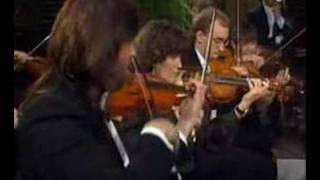
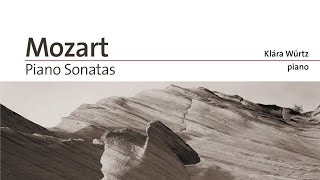
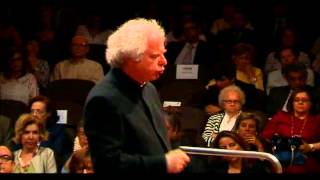
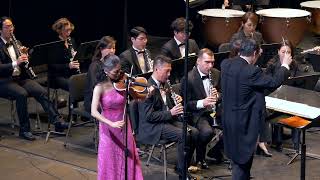
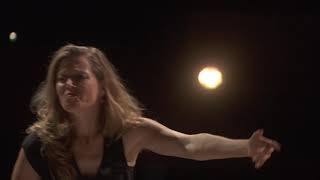
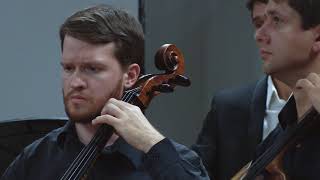
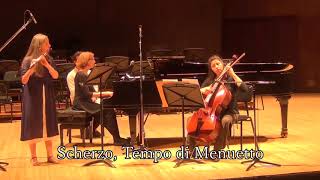
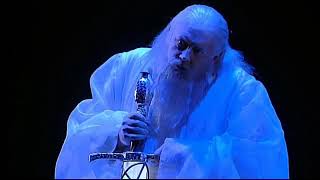
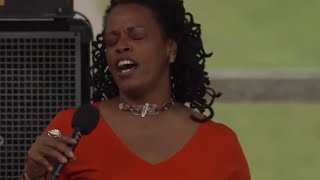
![Azken gezia [Diska osoa]](https://videomusicalis.com//images/videos/18542-azken-gezia-diska-.jpg)
